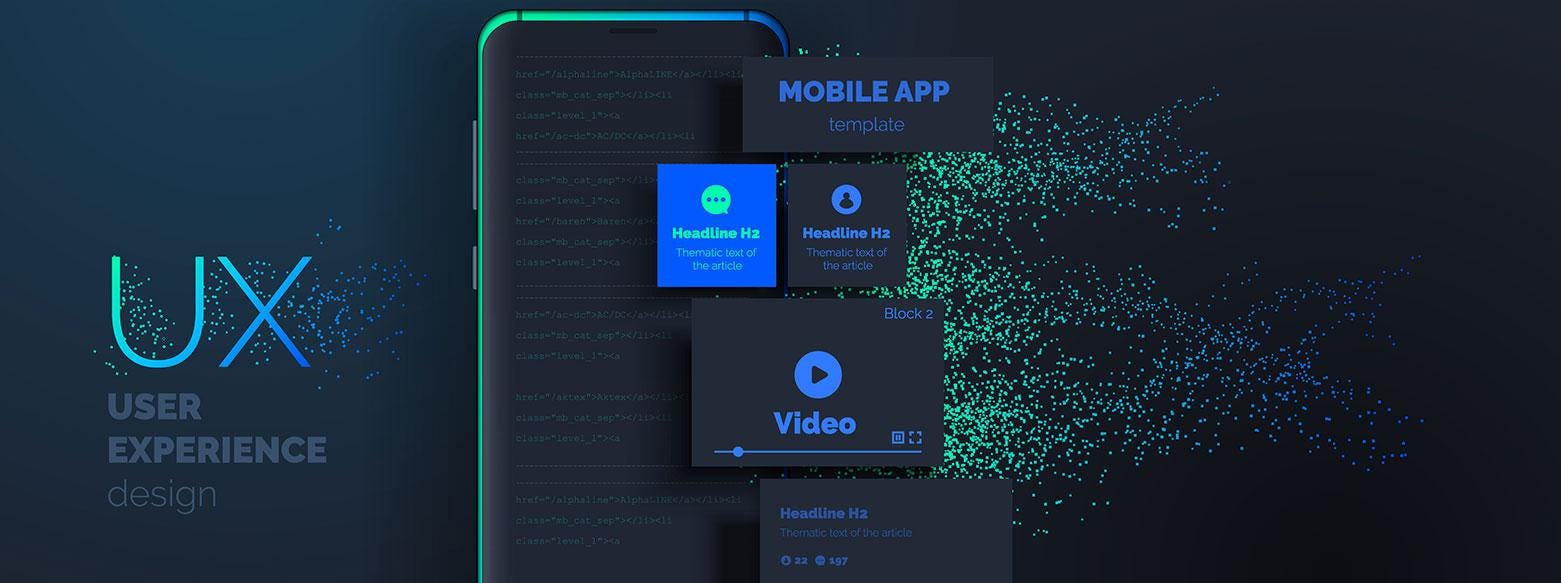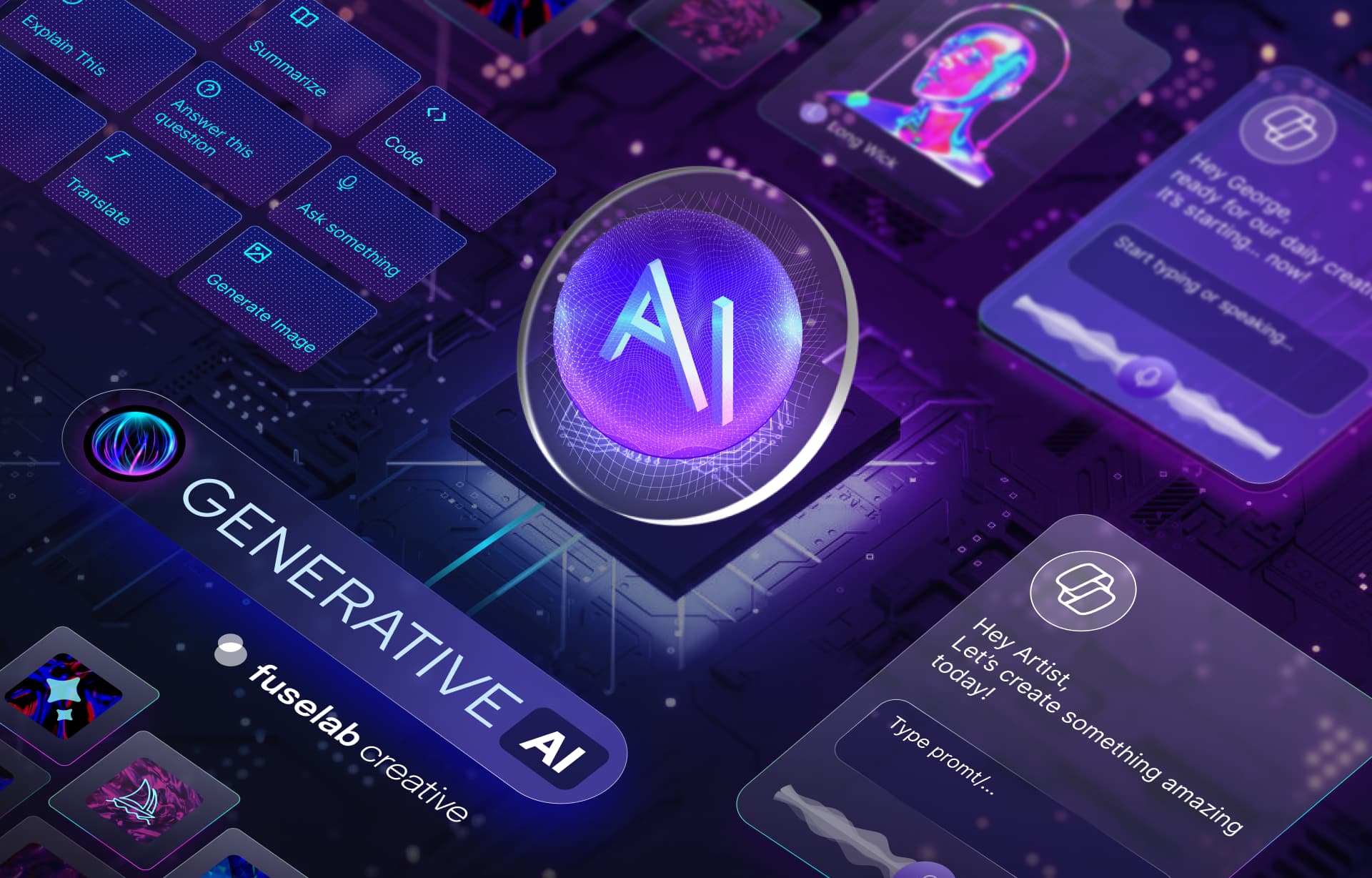
User Experience (UX) design is a crucial aspect of creating digital products and services that are intuitive, user-friendly, and visually appealing. In today’s fast-paced digital world, where competition is fierce, a web designer strives to deliver exceptional user experiences to gain a competitive edge. One of the latest advancements revolutionizing the field of UX design is the integration of generative artificial intelligence (AI) technologies. These innovative tools empower a web designer with superhuman capabilities, enabling them to create stunning and highly functional designs in less time and with greater efficiency.
What are Generative AI Websites?
Before delving into the impact of generative AI on UX design, let’s first understand what generative AI is. Generative AI refers to a branch of artificial intelligence that focuses on creating content, such as images, text, or even entire websites, autonomously. Unlike traditional AI systems that rely on predefined rules or datasets, generative AI utilizes algorithms capable of generating novel and creative outputs based on input data and patterns learned from it.
In the context of UX design, generative AI websites are platforms or tools that leverage AI algorithms to assist designers in various aspects of the design process. These websites offer a wide range of features and functionalities, from generating design suggestions and prototypes to providing insights into user behavior and preferences.
Top Generative AI Websites for UX Design
Several generative AI websites have emerged in recent years, offering designers powerful tools to streamline their workflow and unlock new possibilities in UX design. Here are some notable examples:
- Designhill’s AI-Powered Logo Maker: Designhill’s platform utilizes generative AI algorithms to generate custom logo designs based on user input, such as business name, industry, and style preferences.
- Droplr’s AI Design Assistant: Droplr’s AI assistant analyzes user-provided design briefs and automatically generates design concepts, saving designers time and effort in the ideation phase.
- Figma’s Auto Layout: Figma’s Auto Layout feature uses generative algorithms to automatically adjust the layout of design elements based on changes made by the designer, ensuring consistency and efficiency in the design process.
- Adobe Sensei: Adobe Sensei is an AI-powered platform that offers various tools and features to enhance the creative process, including automatic image tagging, content-aware fill, and intelligent cropping.
- Wix ADI (Artificial Design Intelligence): Wix’s ADI platform leverages AI algorithms to analyze user preferences and create personalized website designs tailored to individual needs and preferences.
Features and Benefits of Generative AI Websites
Generative AI websites offer several features and benefits that make them invaluable tools for UX designers:
Automated Design Suggestions
One of the primary advantages of generative AI websites is their ability to generate design suggestions and prototypes automatically. By analyzing user input and preferences, these platforms can quickly generate multiple design variations, helping designers explore different ideas and concepts more efficiently.
Customization Options
Generative AI websites often come with extensive customization options, allowing designers to fine-tune and personalize their designs according to specific requirements. From adjusting colors and typography to modifying layout and composition, designers have full control over the design process while benefiting from AI-powered assistance.
Time and Cost Efficiency
By automating repetitive tasks and speeding up the design process, generative AI websites help save time and reduce costs for designers and businesses alike. Instead of spending hours manually creating design mockups or prototypes, designers can rely on AI-powered tools to generate high-quality designs in a fraction of the time.
Challenges and Limitations
While generative AI websites offer significant benefits for UX design, they also pose several challenges and limitations that designers need to be aware of:
Potential Drawbacks of Generative AI in UX Design
One of the main challenges of using generative AI in UX design is the risk of relying too heavily on automation and sacrificing human creativity and intuition. While AI algorithms can assist designers in generating design ideas and prototypes, they cannot replace the human touch and ingenuity that are essential for creating truly innovative and impactful designs.
Overcoming Challenges
To overcome the limitations of generative AI in UX design, designers should strive to strike a balance between automation and human input. By leveraging AI-powered tools to streamline routine tasks and free up time for creative exploration, designers can harness the full potential of generative AI while preserving the human element in the design process.
Future Trends in UX Design with Generative AI
Looking ahead, the future of UX design with generative AI looks promising, with continued advancements in AI technology driving innovation and creativity in the field. Some emerging trends to watch out for include:
Advancements in Generative AI Technology
As AI algorithms become more sophisticated and capable, generative AI websites will continue to evolve, offering designers increasingly powerful tools and features to enhance their creative process.
Predictions for the Future of UX Design
In the coming years, we can expect to see a greater integration of generative AI into every aspect of the UX design process, from initial ideation and prototyping to user testing and optimization. AI-powered design assistants and virtual collaborators may become commonplace, revolutionizing the way designers work and collaborate.
Tips for Integrating Generative AI into UX Design Process
To make the most of generative AI in UX design, designers should follow these best practices:
Best Practices for Utilizing Generative AI Tools
- Start with a clear design brief and objectives to guide the AI-generated outputs.
- Experiment with different AI-powered tools and platforms to find the ones that best suit your needs and workflow.
- Combine AI-generated outputs with human creativity and intuition to create truly unique and impactful designs.
Collaboration between Designers and AI
Encourage collaboration and communication between designers and AI systems to leverage the strengths of both. Designers should provide input and feedback to AI algorithms, helping them learn and improve over time, while AI systems can assist designers in generating ideas and solutions that they may not have considered otherwise.
The Human Touch in UX Design
While generative AI technologies offer powerful capabilities for streamlining the design process, it’s essential to remember the importance of the human touch in UX design. Design is ultimately a creative and subjective endeavor that requires empathy, intuition, and a deep understanding of human behavior and psychology.
Ethical Considerations
As we embrace the potential of generative AI in UX design, it’s crucial to address ethical considerations and ensure that AI-powered systems are used responsibly and ethically. This includes addressing biases in AI algorithms, safeguarding user privacy and security, and ensuring that AI-generated designs prioritize inclusivity and accessibility for all users.
Conclusion
Generative AI websites offer designers superhuman capabilities to streamline the UX design process and unlock new creative possibilities. By leveraging AI-powered tools and platforms, designers can automate routine tasks, generate design suggestions, and iterate quickly based on user feedback, ultimately delivering exceptional user experiences that delight and engage users.
As we look to the future, the integration of generative AI into UX design will continue to evolve, driving innovation and creativity in the field. By embracing the potential of AI while preserving the human touch in design, we can create truly remarkable experiences that enhance the way we interact with digital products and services.
FAQs
- What is Generative AI? Generative AI refers to a branch of artificial intelligence that focuses on creating content autonomously, such as images, text, or entire websites, based on input data and learned patterns.
- How does Generative AI enhance UX Design? Generative AI empowers designers with automated design suggestions, customization options, and time-saving features, enabling them to create high-quality user experiences more efficiently.
- Are Generative AI websites suitable for all industries? While generative AI websites can benefit a wide range of industries, their suitability depends on specific design needs and objectives. Some industries may benefit more from AI-powered design tools than others.
- Can Generative AI completely replace human designers? While generative AI can automate certain aspects of the design process, it cannot replace the creativity, intuition, and empathy of human designers. AI should be viewed as a tool to augment human creativity, not replace it entirely.
- What are the potential risks of relying on Generative AI for UX Design? Potential risks of relying on generative AI for UX design include the risk of sacrificing human creativity and intuition, biases in AI algorithms, and concerns about user privacy and security. It’s essential for designers to approach AI technologies with caution and consideration for ethical implications.









